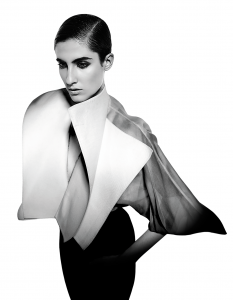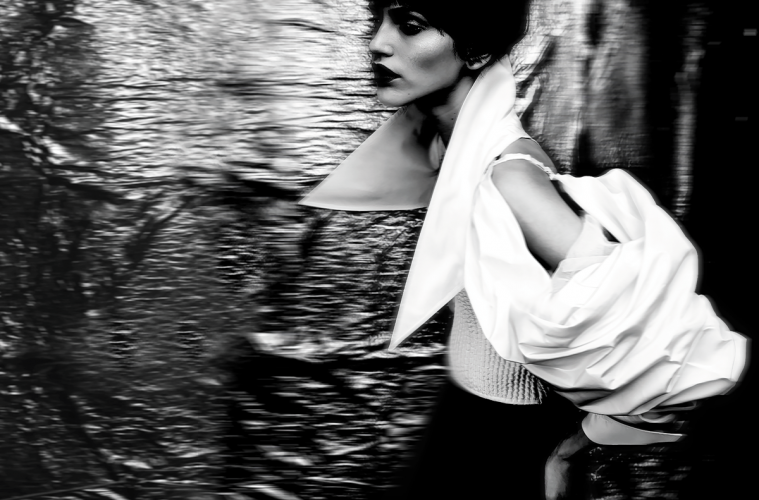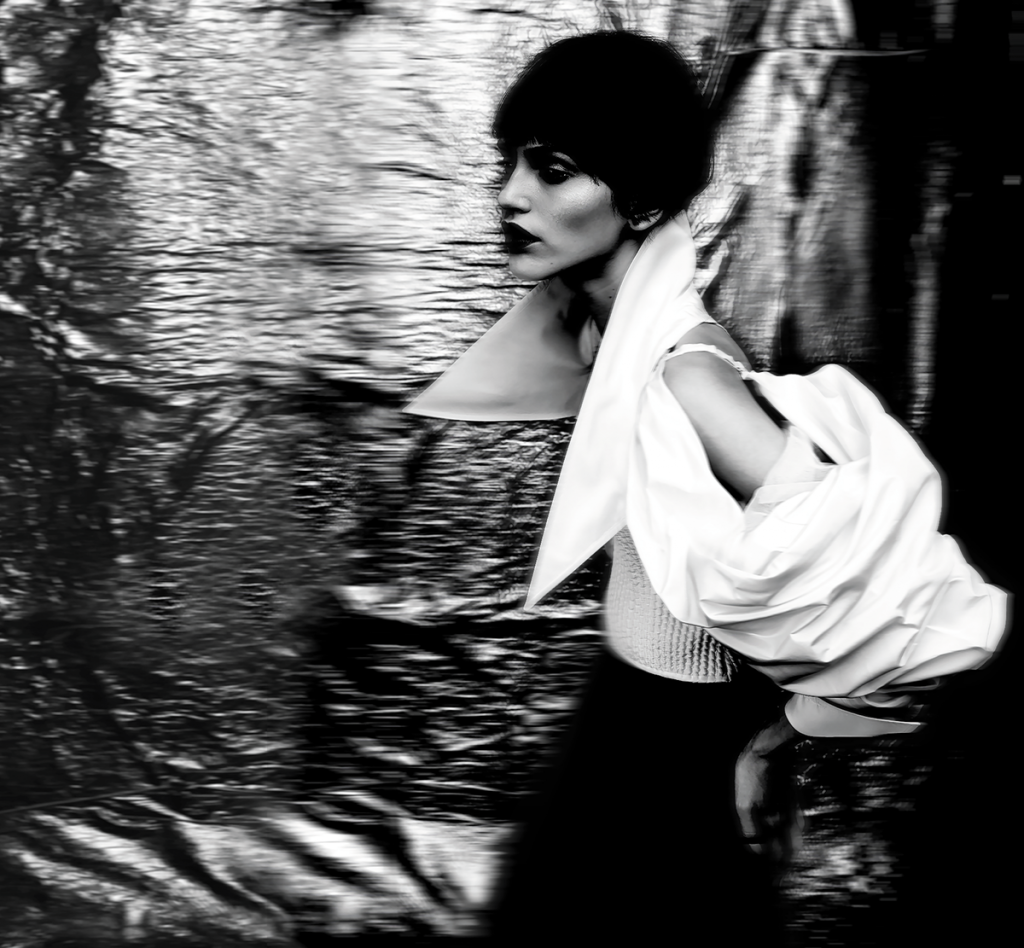The white shirt is like a blank drawing board upon which a skilled designer can showcase his or her originality, creativity and personal touch. Variations on a woman’s white shirt became a hallmark of Gianfranco Ferré’s fashion career. With a deep background in design, Ferré first trained as an architect.
His work in fashion is considered intellectual and powerful, detailed and technical, and is strongly associated with the late 20th-century movement of power dressing,for career women who still displayed femininity in their modern suits and accessories.
This exhibition of the designer’s structured-oriented work has been put on view in a variety of different architectural contexts. The show originated at the Foundazione Gianfranco Ferré in Prato, Italy, where most of Ferré’s garments were produced. According to PAM’s curator of fashion, Dennita Sewell, “It was at Prato, then in Milan at the Palazzo Reale—right in the central square next to the Duomo in a historic building—so first a 19th-century space, then a Baroque space and now our very contemporary American space.”

Gianfranco Ferré Fashion at Phoenix Art Museum
The Steele Gallery at PAM has undergone a complete transformation from its traditional white walls to a high-contrast, modern labyrinth, almost like a sci-fi movie set, to support the show. At the entry of the exhibit, long curtains of tulle are illuminated by projections of Ferré’s sketches. Visitors must brush past these white draperies and then travel through a dark geometric archway to enter the main gallery.
The entire room has been transformed with geometric niches and hallways that curve and then reveal the enormous, wide-open Steele Gallery. The pathways and way-finding into the exhibit were crafted by Richard Jensen’s WORKSBUREAU team—the same group responsible for the Hollywood Costume exhibit design. Ferré’s white shirts hang from triangular, architectural clothing forms—a modernist nod to the female form with wider shoulders and cinched waist. They almost look like sails on sharp metallic masts.
Accompanying the 12 white shirts are magazine clippings, sketches and other ephemera related to each design. And at the far end of the room, a gigantic mirror creates the illusion of an “infinity of white shirts,” Sewell says.
“We are really looking at him as a designer who had an impact on setting the styles of the ’80s and ’90s,” she says.
Playing overhead is Keith Jarett’s Köln Concert, a contemporary classical piano piece recorded in January 1975.
“The architecture of that piece of music is very much like the architecture of Ferré’s style. There’s a real refinement to it, but a fresh modernity,” says Sewell.
Down the dark exit hallway are X-ray–like prints of many of garments, which help illustrate the sophisticated and exacting constructions. Sewell points to a round, flowing blouse assembled from three concentric circles. Another white shirt, this one with a corset and bracelet-like, free-hanging cuff accessories, looks historically feminine (think Victorian era) while simultaneously hard-edged (think mild bondage allusion).
The White Shirt According to Me will be on view simultaneously with a supporting show of Ferré’s drawings, Gianfranco Ferré Designs, in the upstairs mezzanine Ellman Gallery. This exhibit draws together nearly seven dozen of Ferré’s sketches and shows how these drawings are translated into patterns to become actual garments.
Ferré reportedly once said that drawing was a supreme expression of “freedom and rigor—creativity and tool,” but that drawing was also a tool for summing up the general parts of a project.
Programming around the two simultaneous shows provides many “must see” opportunities for fashion students, Sewell says. In addition to talks and an opening-weekend panel, there will be a one-time “see it free” screening of La Dolce Vita, as well as other Italian film screenings throughout the season. “‘Made in Italy’ has a cachet that has developed over the years,” Sewell says. “Ferré represents that cachet.”


